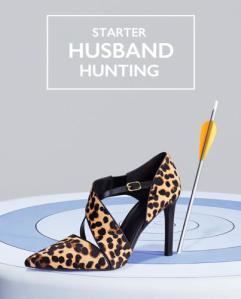 Beyond the 25-49 Demo
Beyond the 25-49 Demo
I hear target audience horror stories like Nine West all the time. Sometimes it is a media target issue, sometimes it is a relevance issue and sometimes it is a creative issue. Today targeting marketing to women has a whole new meaning. We need to know a lot more about a target than their sex, age, income and favorite brands. The creative, the brand and the media all have to be in sync.
Nine West Looking to Shock?
One of the most talked about campaigns in the women’s sector is the fall advertising campaign from shoe company Nine West. Customers of the brand found it offensive and said the brand did not know them well. The campaign targets women 25-49. Okay and what else? Evidently the campaign has centered on supposedly key occasions in women’s lives – Starter Husband Hunting, the anticipated Walk of Shame, and the First Day of Kindergarten complete with four-inch heels and the Drunch – a drunken lunch. Criticism has come from those saying this campaign is not new, but rather a throwback to the 50s when all women wanted was a wedding and a child.
The marketing team said that the brand had lost its luster and they sought to bring some new life to it. And maybe they did expect to encite and enrage a bit. They were clearly not going after mainstream women, but following those who see themselves like HBO series “Girls” and Amy Schumer, the provocative stand-up comic. Did they target them? Maybe. This advertising smacks of Miley Cyrus trying to be irreverent to get a new fan base. Or American Apparel trying to be provocative to make t-shirts sexy. But the real matter is how many of their base audience did they disenfranchise.
Consumer Backlash to Nine West Campaign
“Stupid campaign 9W. Love your shoes but don’t patronize your customers by an outdated ideal,” said one Facebook user. “Women are hunting success and goals, dreams and visions. Not husbands.” This is pretty true. Millennial women of today think man-hunting is a pretty outdated notion and they value their independence. The top priorities in her life are career success and love. Oh, and love does not necessarily mean marriage.

Jimmie John’s had a moment of lapse when they aired a spot in the Super Bowl that shows a man coming home to his wife who is doing the laundry. Whoa! Did they forget that 74% of women work and many of them are their customers? SodaStream took heat for their spot with Scarlett Johansson which broke several rules – mentioning Coke and Pepsi and objectifying a woman as a way to sell the soda maker.
Huggies had their miss when they showed Dads being inattentive to babies with full diapers because, hey, Huggies can handle anything. They certainly where in tune with the importance of shared responsibilities for children today, but they didn’t catch the nuance that Dads were portrayed as inattentive and non-caring. Stay-at-home dads were irate and created a petition “We’re Dads, Huggies, Not Dummies”.
An advertising friend called me this week and was telling me another story about targeting. Campaigns for a luxury car didn’t move the needle until they took into account the aspirational buyer. Their media tracking was able to notice this aspiring buyer. By offering a lease package for these aspirational buyers, sales accelerated nicely.
So what is the lesson here? Certainly brands must hit the right segment of their target audience and clearly they must trigger the emotion that the product or service has for the buyer.
1. Look at your target beyond demographics. What are the psychographics of the buyer? Why are the self-expressive benefits of your brand? How does the product make them feel? What are their values? Two moms can be vastly different. One can value organic food, yoga and do her own composting, while another can be a price/convenience shopper, with their mobile phone dialed to take-out and restaurants that take coupons. Find out their tangential interests – what do they pin to Pinterest, follow on Twitter or share on Facebook?
2. Talk to your consumers. Shocking thought. Today we can do that in a variety of ways. We can conduct online or in-person focus groups. We can turn to social media to see what they are saying and we can use social to have conversations to better understand how to be relevant to them. We often construct customer journeys to see how a brand fits into a consumers day and life. Recently some research we did on furniture purchase turned up an interesting fact about a huge national retailer. The consumers were not in love with the brand; it was just an easy alternative to working with a designer for the less important rooms in their home. Everything worked together and could be purchased and delivered quicker than designer fare.
3. Understand the problem your brand will solve for the consumer. I doubt Nine West had research that said they wanted special shoes for a “Walk of Shame”. Need states and occasions have long been part of marketing but truly understanding the underlying reason for the product is essential to creating relevant advertising. If you are advertising cars, some may be eco-friendly and interested in gas mileage while others are seeking safety for their family, or technology to suit their geekiness.
Oh, by the way, Nine West is sticking to their campaign. So let’s see how it works out for them and see what they do next year!
 Beyond the 25-49 Demo
Beyond the 25-49 Demo
